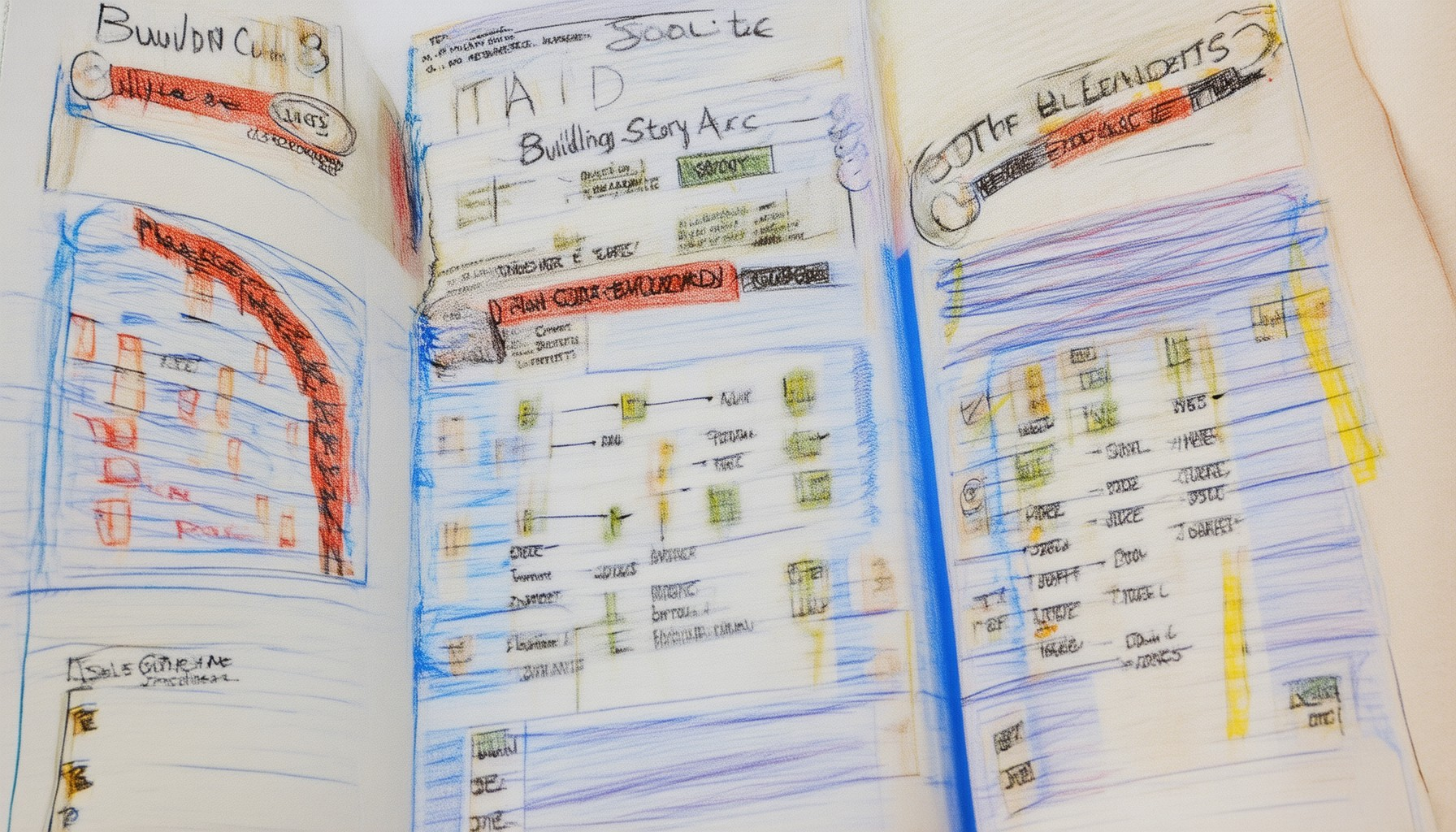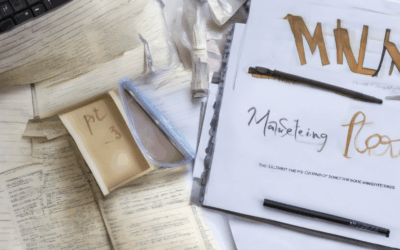Storytelling is a fundamental human experience that transcends boundaries, shaping cultures, businesses, and entertainment. Whether crafting a compelling novel, developing a marketing strategy, or delivering a presentation, the art of storytelling lies at the heart of communication. At its core, a well-crafted story arc is the backbone of any narrative, guiding audiences through a journey of emotions, conflicts, and resolutions. In this article, we delve into the intricacies of building story arcs, exploring the essential elements that make narratives unforgettable. From understanding the arc of the story to mastering the plot arc, we will examine how these elements contribute to creating engaging and impactful stories. By dissecting the components of a story arc, we aim to equip you with the tools to craft compelling narratives, whether you’re an aspiring writer, a content creator, or a business strategist. Join us as we uncover the secrets to masterful storytelling and how it can transform your approach to communication.
Key Takeaways
- Mastering Story Arcs Elevates Your Narrative: Crafting a story arc is essential for building compelling narratives, ensuring a logical flow from introduction to resolution.
- Phases of a Story Arc: Understand the key phases—Introduction, Confrontation, Climax, and Resolution—to guide your protagonist’s journey effectively.
- Engage Readers with a Well-Crafted Arc: Drive engagement through clear progression, emotional depth, and character development, making your story unforgettable.
- Effective Story Arcs Combine Key Elements: Ensure your arc has a strong structure, deep character growth, and meaningful themes to resonate with readers.
- Build Success with Essential Elements: Start with a compelling setup, navigate rising action, reach a climactic peak, and conclude with lasting impact.

What is a Story Arc, and How Does It Help in Building Compelling Narratives?
A story arc is the structured progression of a narrative, dividing it into distinct phases to maintain engagement and build compelling stories. It serves as a roadmap for guiding readers through the journey of a character or plot, ensuring a logical flow and emotional connection.
Key Phases of a Story Arc:
- Setup : Introduces the protagonist, establishes their world, and presents the central conflict or desire.
- Confrontation : The character faces challenges or opposition, often leading to growth or transformation.
- Climax : The highest point of conflict or emotion, where the outcome is uncertain.
- Resolution : Wraps up the story, providing closure and reflecting on the character’s growth.
Benefits of a Well-Crafted Story Arc:
- Engagement : Keeps readers invested by showing character development and plot progression.
- Emotional Connection : Creates deeper bonds with characters through shared experiences.
- Pacing : Balances speed to maintain interest, whether rushing toward a climax or exploring the setup.
- Conflict and Stakes : Elevates tension, making outcomes meaningful.
- Character Growth : Showcases personal evolution, enriching the narrative.
- Themes and Symbolism : Incorporates underlying messages, adding depth.
Examples:
- In The Lord of the Rings , Frodo’s journey from peace to confronting Sauron exemplifies a classic arc.
- Harry Potter illustrates growth as Harry fulfills his destiny.
By following a story arc, authors create structured, emotionally resonant narratives that captivate audiences, leaving lasting impressions.
What Are the Key Steps Involved in Building a Successful Story Arc?
To craft a compelling story arc, follow these essential steps, each carefully crafted to guide your narrative toward success:
1. Create a Gripping Hook
The opening is crucial. Begin with a strong hook—whether a suspenseful scene, an intriguing question, or an emotional moment—to immediately engage readers. A hook should grab attention within the first paragraph, setting the stage for the rest of the story.
- Use a surprising fact or statistic.
- Present a unique problem or challenge.
- Tell a small, memorable story.
- Pose a provocative question or statement.
2. Establish the Protagonist and Setting
Introduce your main character, ensuring they are relatable and flawed. Develop the setting to reflect the mood and tone of your story, whether it’s a bustling city, serene countryside, or futuristic universe.
- Give your protagonist a distinct personality and backstory.
- Describe the environment in detail to immerse the reader.
- Clarify the world-building elements early on.
3. Introduce the Inciting Incident
This is the event or choice that propels your protagonist into action. It should disrupt their routine and force them into a journey of growth or conflict.
- The inciting incident often occurs within the first quarter of the story.
- It should present a clear conflict or opportunity for change.
- Consider both external events and internal struggles.
4. Develop the Character’s Journey
Guide your protagonist through their evolution, facing challenges and learning lessons along the way. Show progression in their skills, beliefs, and relationships.
- Include moments of tension and relaxation.
- Allow the character to face moral dilemmas.
- Build meaningful relationships that influence their growth.
5. Reach the Climax
The climax is the peak of the story’s conflict. It should resolve the central issue and leave a lasting impression on the reader.
- Build suspense and anticipation leading up to the climax.
- Present a resolution that feels earned and satisfying.
- Consider multiple subplots converging at this point.
6. Craft a Satisfying Resolution
Conclude your story in a way that ties together the themes and character development. Provide closure while leaving room for reflection.
- Resolve loose ends and unanswered questions.
- Highlight the character’s growth and achievements.
- Leave the reader with a lingering impact.
By following these steps, you can create a story arc that captivates readers, maintains engagement, and leaves a lasting impression. Remember, the key is to balance conflict, character development, and thematic depth to craft a truly compelling narrative.

How to Build a Compelling and Engaging Story Arc
A well-crafted story arc is the backbone of any engaging narrative, guiding readers through a journey of emotions, conflicts, and resolutions. Below is a step-by-step guide to constructing a compelling story arc:
- Understand the Basics of a Story Arc
- The story arc typically consists of six main parts: Setup, Rising Action, Climax, Falling Action, Resolution, and optional Epilogue. Each part serves a purpose in maintaining engagement and driving the narrative forward.
- 1. Setup
- Begin by introducing your protagonist and the world they inhabit. Establish the setting, the central conflict, and the stakes. This sets the stage for the reader and creates curiosity about what will happen next.
- 2. Rising Action
- Escalate the tension and introduce challenges that force your protagonist to grow and evolve. This phase builds momentum and keeps the reader invested in the outcome. Balance is key—avoid rushing through this phase to allow the story to breathe.
- 3. Climax
- Reach the peak of the conflict where the main storyline resolves. This is where the protagonist confronts their greatest challenge and achieves their goal. The climax often reveals the true nature of the conflict and provides closure to the primary plot strands.
- 4. Falling Action
- Wind down the story by resolving loose ends and allowing the protagonist to find peace with themselves and their world. This phase should feel natural and lead seamlessly into the final resolution.
- 5. Resolution
- Conclude the story by answering the central questions and providing closure. This is where the protagonist reflects on their journey and the lessons learned. The resolution can also leave room for speculation or reflection, adding depth to the narrative.
- 6. Epilogue (Optional)
- Add an epilogue to provide additional insight into the characters or the world after the main events. This can offer a satisfying coda or hint at future possibilities, depending on the tone of the story.
- Master the Hero’s Journey
- Joseph Campbell’s Hero’s Journey provides a classic framework for structuring your story. While it can be adapted to fit your needs, it offers a solid foundation for creating compelling narratives. Key stages include:
- Ordinary World
- Call to Adventure
- Refusal of the Call
- Mentorship
- Crossing the Threshold
- Tests, Allies, and Enemies
- Ordeal
- Reward
- Road Back
- Resurrection
- Return with the Elixir
By following these steps and principles, you can craft a story arc that captivates readers, maintains momentum, and leaves a lasting impression. Whether you’re writing fiction, poetry, or scripts, understanding and applying these elements will help you create narratives that engage and inspire.
For more resources and writing tips, visit James Whitfield Thomson and explore their literary platform dedicated to storytelling excellence.

What is a Story Arc?
A story arc is the structural framework that organizes a narrative into distinct phases, guiding readers through the protagonist’s journey. Typically comprising three to four acts, it ensures a logical progression from introduction to resolution, maintaining engagement and coherence.
Key Phases of a Story Arc
- Introduction (Setup):
- Introduces characters, setting, and central themes. Establishes the protagonist’s world and initial circumstances.
- Confrontation:
- Introduces conflict or challenge. Drives the protagonist toward growth and transformation through obstacles and opposition.
- Climax:
- Peaks the tension, often involving a decisive moment or turning point where the protagonist confronts the primary conflict.
- Resolution:
- Concludes the story, resolving the central conflict and showing the protagonist’s growth and the lasting impact of their journey.
Benefits of a Well-Crafted Story Arc
- Engagement: Maintains reader interest by providing clear progression and conflict.
- Clarity: Structures the narrative, making it easier for readers to follow.
- Emotional Investment: Encourages readers to connect with characters and their struggles.
- Character Development: Allows for growth and transformation of the protagonist.
- Conflict and Suspense: Builds tension and keeps the audience hooked.
- Foreshadowing: Hints at future events, adding intrigue and anticipation.
By mastering the story arc, writers can craft narratives that captivate audiences, offering a satisfying and immersive experience.
What Makes a Story Arc Effective?
A story arc is effective when it masterfully combines several key elements to captivate audiences and leave a lasting impact. Here’s a breakdown of what makes a story arc compelling:
- Strong Structure : An effective story arc follows a clear beginning, middle, and end. The setup introduces the protagonist and conflict, the climax builds tension, and the resolution wraps things up satisfactorily. Consistency in pacing ensures the narrative flows smoothly.
- Character Growth : At its core, a great story arc showcases character development. Readers connect with protagonists who evolve, revealing personal strengths, vulnerabilities, and growth through their journey. This transformation makes characters relatable and memorable.
- Conflict Resolution : Conflict drives the story forward, and its resolution must feel earned. Whether it’s an internal struggle or an external challenge, the resolution should align with the story’s themes and provide closure.
- Pacing : A well-crafted story arc balances slow-building moments with suspenseful peaks. Poor pacing can bore readers, while rushed endings may leave them unsatisfied. Strategic placement of plot twists keeps the audience engaged.
- Themes : The story arc should explore meaningful themes, offering insights into human nature, societal issues, or universal truths. Themes resonate with readers, making the story more impactful and thought-provoking.
- Emotional Depth : Effective arcs evoke strong emotions. They make readers laugh, cry, or reflect on their own experiences, creating a deeper connection between the narrative and its audience.
By integrating these elements, a story arc becomes more than just a sequence of events—it becomes a journey that resonates long after the final page is turned.
jameswhitfieldthomson.com/storytelling-techniques
jameswhitfieldthomson.com/character-development

What Are the Essential Elements Required to Build a Successful Story Arc?
A successful story arc is built on several key elements that work together to captivate audiences and create a memorable narrative. Here’s a breakdown of the essential components:
- Setup : The foundation of every great story begins with a compelling setup. This introduces the protagonist, the world they inhabit, and the status quo. A strong setup gives readers a clear understanding of the character’s circumstances and motivations.
- Call to Adventure : The setup is disrupted by the call to adventure, which propels the protagonist into the unknown. This could be a sudden event, a mysterious visitor, or an unexpected discovery that forces the hero to leave their comfort zone.
- Rising Action : As the protagonist navigates the external and internal challenges, the rising action builds tension. This phase involves encounters with allies, enemies, and obstacles that test the protagonist’s resolve and growth.
- Climax : The climax is the peak of the story where the protagonist confronts the central challenge or antagonist. This moment often features life-or-death stakes and is crucial for driving emotional investment from the audience.
- Resolution : After overcoming the final hurdle, the protagonist achieves their goal or undergoes significant personal growth. The resolution ties up loose ends and shows the impact of the journey.
- Conclusion : The story concludes by returning the protagonist to the ordinary world, now forever changed by their experiences. This closure can highlight lessons learned, relationships formed, or the new normal for the protagonist.
To further explore these elements, visit James Whitfield Thomson for insights, tips, and resources on crafting compelling narratives. Additionally, discover how other authors and platforms like Storytelling Hub and Narrative Mastery can enhance your understanding of story arcs.
By mastering these elements, you can create stories that resonate deeply with readers and leave a lasting impression.





0 Comments